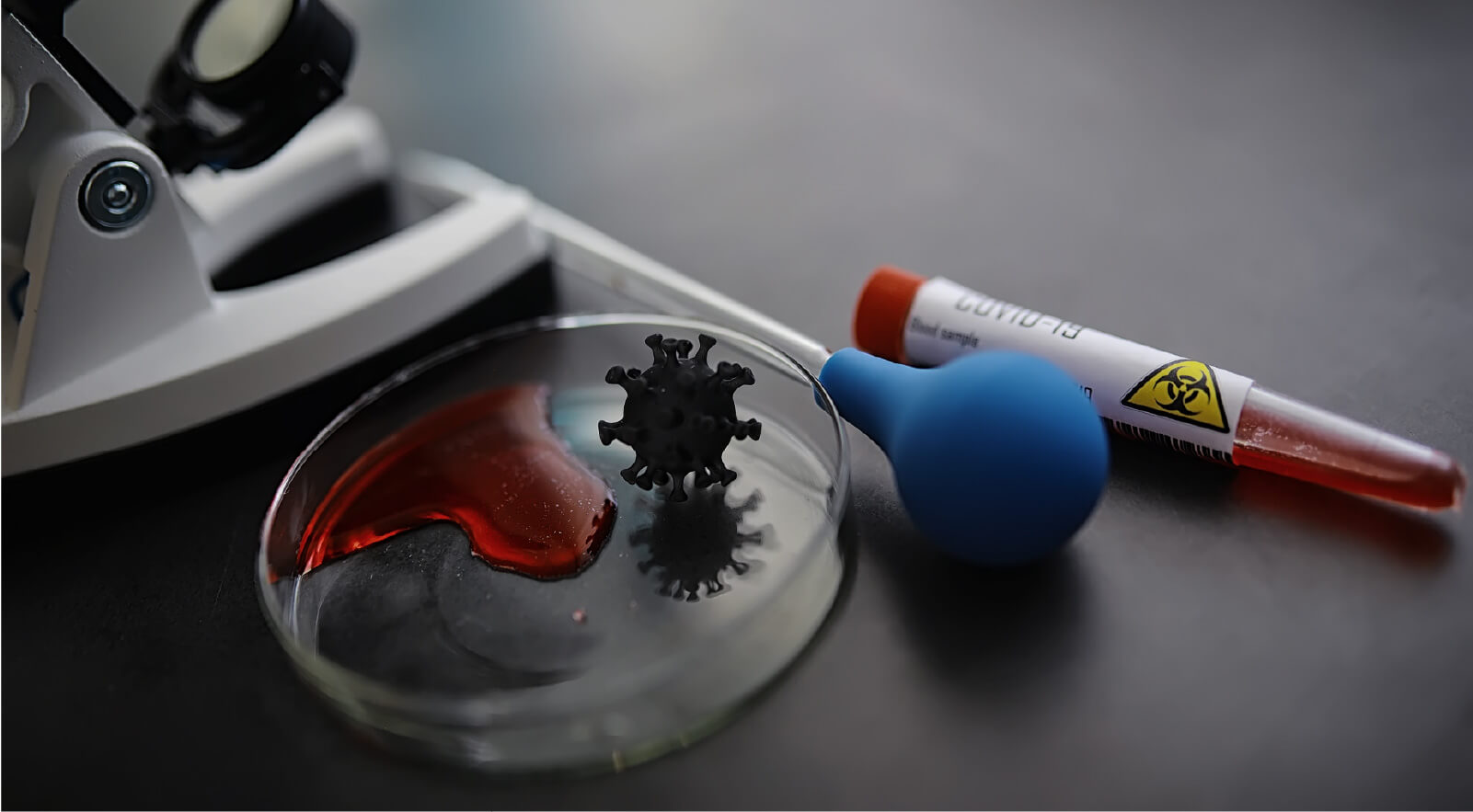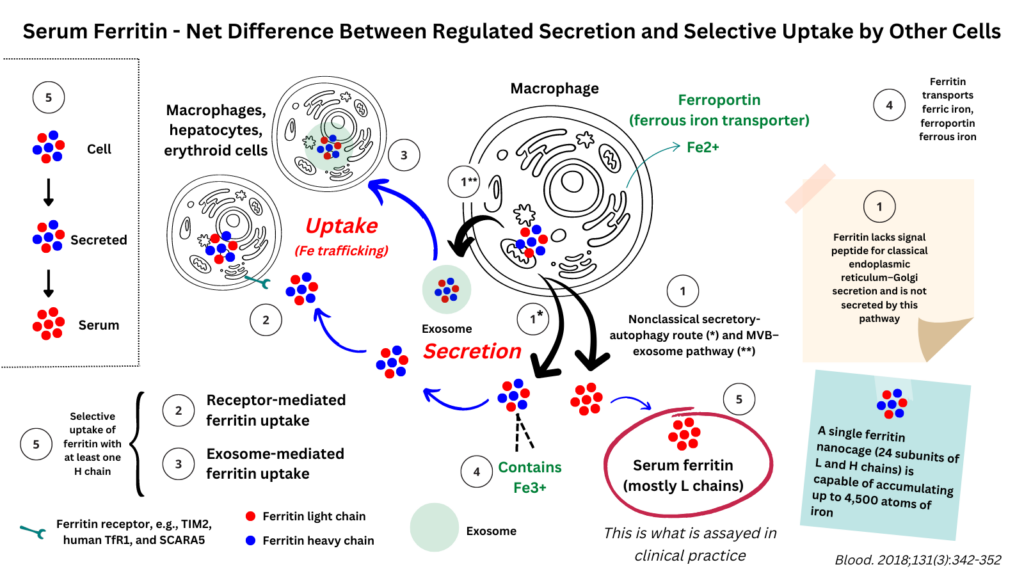
How Does Ferritin Get Into and Out of Cells?

Figure key:
- 1) Ferritin is secreted by cells. It does not simply leak (though that may occur in cases of cell injury). Previous studies have shown that ferritin does not have a signal peptide for classical endoplasmic reticulum–Golgi secretion (though it does in insects). Rather, it is secreted by a nonclassical secretory-autophagy route (*) and MVB–exosome pathway (**).
- 2/3) Once secreted, ferritin is taken up by certain cells (e.g., macrophages, hepatocytes, and developing erythroid cells) by receptor-mediated and exosome-mediated mechanisms, where it provides a source of iron.
- 4) Thus, there are two ways to transport iron out of cells: ferroportin (Fe2+) and ferritin (Fe3+).
- 5) While serum ferritin is poor in H chains and Fe, secreted ferritin (e.g., from cultured cells) is similar to the intracellular form. To explain these differences, Truman-Rosentsvit et al have hypothesized that: “ferritins containing iron and at least 1 H subunit are locally delivered to cells via vesicular structures, such as exosomes, and via receptor-mediated internalization and thus never reach the serum. Only iron-poor L-subunit ferritins, which are barely taken up by the H-specific ferritin receptors, reach the serum.” In other words, what we are measuring clinically is the net difference between secreted ferritin (containing a wide spectrum of light and heavy chains) and what is selectively taken up by cells (primarily H chain-containing ferritin particles).1
